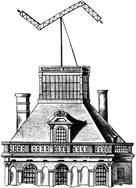LIFE BEFORE THE TELEGRAPH AND THE TELEPHONE
UNIT 2. TELECOMS
Part 1. BRIEF TELECOM HISTORY
“If you don't know history, then you don't know anything. You are a leaf that doesn't know it is part of a tree. ”
Michael Crichton
LEAD IN
Do you know any facts from the history of telecoms? What means of early telecoms do you know?
Look at the following pictures and try to guess what kinds of telecom means are depicted on them. Where can we see such devices now? Are they still used?
| a) | 
| b) | 
| c) | 
|
| d) | 
| e) | 
| f) | 
|
Examine the list of telecom devices and pieces of equipment. What do you know about the history of these devices? Which one is the oldest? Which one is the most modern? Which one is most frequently used? Match the following items with the years of their creation.
| semaphore | a) | ||
| satellite | b) | ||
| radio receiver | c) | ||
| pager | d) | 1980s’ | |
| optical fibre | e) | ||
| fax | f) | ||
| telegraph | g) | ||
| telephone | h) | early 1840s’ | |
| mobile telephone | i) | ||
| computer | j) |
§READING and VOCABULARY
Study the following words in the box. Make sure you know them. Try to explain each notion.
| distant | significant | ancient | purpose |
| transmitting | exchange | reliable | to stretch |
| movement | means | to receive | evidence |
| to transfer | inventor | pipe | rope |
Read the text and translate it into Ukrainian.
LIFE BEFORE THE TELEGRAPH AND THE TELEPHONE

|
| The smoke signal is one of the oldest forms of long-distance communication. It is a form of visual communication used over long distance. |
The history of the telephone has its roots in the distant past. The need to pass information over significant distances has always been natural to humankind even as far back as ancient times. The idea of the telephone and the need for it was therefore in the air ever since people acquired the need to communicate.
 In the 6th Century B.C. the Persian King Kir commandeered 30,000 people for the sole purpose of transmitting information. These people were known as the 'King’s ears'. They were all located on hill-tops and guarding towers within hearing distance of each other. They passed information from one person to the next, finally reaching the King and, in return, passed on his orders in the same manner. According to the words of the Greek historian, Diodorus Siculus, one day of this primitive 'telephone' information exchange was the equivalent of 30 days walking distance.
In the 6th Century B.C. the Persian King Kir commandeered 30,000 people for the sole purpose of transmitting information. These people were known as the 'King’s ears'. They were all located on hill-tops and guarding towers within hearing distance of each other. They passed information from one person to the next, finally reaching the King and, in return, passed on his orders in the same manner. According to the words of the Greek historian, Diodorus Siculus, one day of this primitive 'telephone' information exchange was the equivalent of 30 days walking distance.
At different times in history, there were different means of communication: e.g. couriers, drums, secret signs (like the color of a sail), fire, smoke, etc.
The most reliable were couriers: people as well as birds. For example, during bad weather, if nobody was willing to run with messages, they had to use their voices or other simple signals. During the Gallic war in 56 B.C., for example, a chain of 'shouters' was stretched out in order to pass information relating to the movements of Caesar’s army. The speed of such information transfer could reach 100km/h! The Medieval buildings of Pskov hosted secret narrow corridors within their walls, specially designed to pass and receive messages. There is evidence that, in the year 968, a Chinese inventor created a device called the ‘thumtsein’ which was able to pass a sound through pipes. In ancient times there was actually a rope telephone in use: basically, a rope was stretched between two diaphragms. Using vibrations, a sound was transmitted from one end to the other. In this way, a form of communication was established between two points at a short distance apart.
3. Answer the following questions:
1. What means of telecommunication are mentioned in the text?
2. What kind of early telecoms was considered to be the most reliable?
3. What way of information transmission was described in the text?
4. What telecom mean is considered to be the first one?
5. Could you describe your opinion about the effectiveness of the early telecom means?